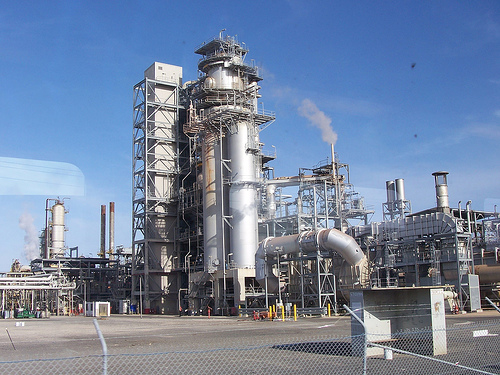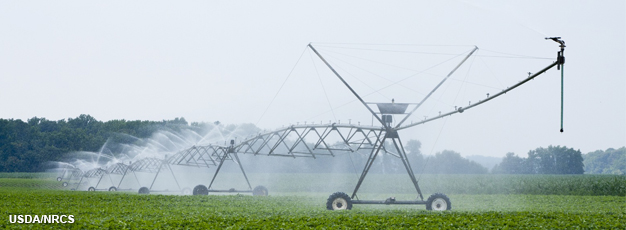
Date: 2025-11-18 Page is: DBtxt003.php L0300-SI-SECTORS-INDUSTRIES
SECTORS / INDUSTRIES
THERE IS ECONOMIC AND TECHNICAL SPECIALIZATION IN EVERY SECTOR
THERE IS ECONOMIC AND TECHNICAL SPECIALIZATION IN EVERY SECTOR
Peter Burgess COMMENTARY
Peter Burgess
| SECTORS / INDUSTRIES | |||||
| Every sector, every industry, has become very specialized and over a long period of time has been optimized for profit performance. Profit performance has been exceptional for decades, but too little attention has been paid to social and environmental issues. This must change. Process improvements are essential and must focus in improving social impact and environmental impact as well as merely being more profitable. |
|
SECTORS-INDUSTRIES
Sector specialization is one of the characteristics of much of the modern economy. It has enabled a high degree of technical specialization which has been very valuable in achieving technical improvement and more technical efficiency. National and international governance institutions have tended to organize along sector lines and this has helped to promote the interestes of sectors in some cases without taking into consideration cross ector issues. TPB Note: In my own experience most development initiatives from the World Bank, the United Nations and others have been designed with a single sector focus. They have frequently failed to deliver on their planned goals simply because they needed support from other sector activities which were weak or non-esistant. It was my experience that the success of a PLACE depended on ALL SECTORS coming together in a holistic manner, and it was my experience that the development organizations had very poor mechanisms to solve problems outside the limits of the sector or the limits of the project. The TVM initiative addressed this problem by retaining the role of a sector from the technical perspective, but also includes STREAMS / STRANDS / STRINGS to reflect the ways in which there are FLOWS through different parts of the socio-enviro-economic system. |
|
SECTOR / INDUSTRY
The economy has been segmented by SECTOR or INDUSTRY for a long time, and more so as specialization has created significant differences between the various segments of the econmy. This works for a simple analysis of the economy and its performance, but less so for a global complex interconnected socio-enviro-econmic system | |
|
STREAM / STRAND / STRING
For a global complex interconnected socio-enviro-econmic system, it is useful to think in terms of STREAMS or STRANDS or STRINGS which flow through many different parts of the system and in the process contribute to progress and maintenance of the system or not. | |
|
PROCESS
PROCESS is at the core of every NODE in the Socio-Envire-Economic System and therefore a critical element in determing the efficiency of the system | |
| Open L0700-TVM-FLOW-PROCESS-CHANGEinSTATE | |
| . |
| … and specifically this mean making all the PROCESSES that are used to support our QUALITY OF LIFE more efficient not only to make more PROFIT but also to have a BETTER IMPACT on SOCIETY (PEOPLE) and ENVIRONMENT (PLANET). | |

|
For example … OIL AND GAS ...
… attention to the use of ENERGY; … attention to the matter of EMISSIONS into the atmosphere; … attention to the matter of waste water and solid matter polluting the environment; … attention to the matter of oil pollution during production and transportation: … and a whole lot more. |

|
For example … in AGRICULTURE ...
better stewardship of WATER use; … attention to pollution from run-off containing fertilizers, herbicides, pesticides, etc; … more responsible use of animal medication to avoid risk of drug resistance important for human health; … the issue of worker exploitation and workplace safety; … and a whole lot more. |

|
For example … TRANSPORTATION ...
… attention to the use of ENERGY; … attention to the matter of EMISSIONS into the atmosphere; … attention to the matter of waste water and solid matter polluting the environment; … and a whole lot more. |

|
For example … OFFICE BUILDINGS ...
… attention to the use of ENERGY; … attention to the matter of EMISSIONS into the atmosphere; … and a whole lot more. |

|
For example … HEAVY INDUSTRY ...
… attention to the use of ENERGY; … attention to the matter of EMISSIONS into the atmosphere; … attention to the matter of waste water and solid matter polluting the environment; … the issue of worker exploitation and workplace safety; … and a whole lot more. |

|
For example … MINING ...
… attention to the use of ENERGY; … attention to the matter of EMISSIONS into the atmosphere; … degradation of the land; … attention to the matter of waste water and solid matter polluting the environment; … the issue of worker exploitation and workplace safety; … and a whole lot more. |

|
For example … CONSTRUCTION ...
… attention to the use of ENERGY; … attention to the matter of EMISSIONS into the atmosphere; … attention to the matter of waste water and solid matter polluting the environment; … the issue of worker exploitation and workplace safety; … and a whole lot more. |
|
CONCLUDING OBSERVATION ...
… more than anything else improving the EFFICIENCY of PROCESS will change the trajectory of global socio-enviro-economic performance; … in the past efficiency has simply been about less COSTS and more PROFIT; … in the future EFFICIENCY has to be about better QUALITY OF LIFE for PEOPLE with very little of no damage to the ENIRONMENT (PLANET) INTEGRATED FINANCIAL AND IMPACT ACCOUNTING ... … integration of financial and impact accounting will make it possible for very much better decisions to be made. … high efficiency can be rewarded and there can be social accountability for bad practices and low efficiency. CHIEF PERFORMANCE OFFICER Maybe in the near future it will be possible to rename the CFO (Chief Financial Officer) to be the CPO … the Chief Performance Officer, a C-level position that integrates financial performancewith impact on society (people) and impact on the environment (planet). | |
|
BOOK DRAFT: Sector Perspective on Society and Economy
BOOK DRAFT material for Sector Perspective on Society and Economy. Some of the material was used in the BURGESS BOOK | Open file bk0020000 |
|
BOOK DRAFT: Sector Perspective on Society and Economy
BOOK DRAFT material for Sector Perspective on Society and Economy. Some of the material was used in the BURGESS BOOK | Open file L0902-TVM-SP-2018-000000 |
| BURGESS BOOK DRAFT - SECTOR BOOK |
|
Chapter 1. Sector Perspective
This chapter describes the importance of a multi-sector approach ... how a single sector initiative frequently fails because some other sector is not functional. This chapter also highlights the importance of sector specific technical capacity. | Open bk0020100 | ||
|
Chapter 2. Sectors: Governance ... Government
This chapter expands on the many components of these sectors including: | Open bk0020200 | ||
| The legislative functions of government | |||
| The executive functions of government | |||
| The enforcement of law and order | |||
|
Chapter 3. Sectors: Infrastructure
This chapter expands on the many components of these sectors including: | Open bk0020300 | ||
| Elements of the transport infrastructure | |||
| Elements of the communications infrastructure | |||
| Elements of the energy infrastructure | |||
| Elements of the housing and real estate infrastructure | |||
|
Chapter 4. Sectors: Agriculture, Fisheries and Food
This chapter expands on the many components of these sectors including: | Open bk0020400 | ||
| Crop Agriculture | |||
| Livestock agriculture | |||
| Fisheries | |||
| Post harvest processing | |||
| Post harvest marketing | |||
|
Chapter 5. Sectors: Industrial Sector
This chapter expands on the many components of these sectors including: | Open bk0020500 | ||
| Mining | |||
| Manufacturing | |||
| Construction | |||
| Tourism | |||
|
Chapter 6. Sectors: Trade and Logistics
This chapter expands on the many components of these sectors including: | Open bk0020600 | ||
| Ocean and air shipping | |||
| Ports and airports | |||
| Warehousing | |||
| Internal rail and truck | |||
| Wholesale | |||
| Retail | |||
|
Chapter 7. Sectors: Service Sectors
This chapter expands on the many components of these sectors including: | Open bk0020700 | ||
| Banking and insurance | |||
| Healthcare | |||
| Education | |||
|
Chapter 8. A lot more issues ... afterword
This chapter starts the dialog about how sector activity should be incorporated into activities to progress society and the economy. | Open bk0020800 | ||
Overall, 13 key sectors and 55 sub-sectors were reviewed for co-benefits.
Economy & Development, Social Inclusion and Environment were not included as sectors, but were instead captured as co-benefits across the 13 sectors.
- Health
- • Health efficiency
- • Children
- • Elderly
- • Care services
- • Pharmaceuticals
- • Malnutrition
- Land use planning
- • Planning rules
- • Infrastructure planning
- • Regeneration
- • Green spaces
- Transport
- • Rail
- • Metro
- • Roads
- • Parking
- • Road safety
- • Cycling
- • Walking
- • E-mobility
- • Shared mobility
- • Multimodality
- • Airports
- • River transport
- • Freight
- • New technology
- Water
- • Water quality
- • Water pollution
- • Water distribution
- • Flood protection
- • Sewerage
- Buildings
- • Energy efficiency
- • Building standards
- • New technology
- Digital
- Energy
- • Energy security
- • Low carbon energy
- • Energy regulation
- • Smart grids & energy distribution
- • Distributed energy
- Education
- • Childcare
- • Schools
- • Higher education
- Tourism, Culture and Sport
- • Tourism
- • Culture
- • Sport
- Food security
- • Food distribution
- • Food safety
- Air quality
- • Carbon emissions
- • Air pollution
- Waste
- • Household waste
- • Industrial waste
- • Recycling
- • Landfill
- • Incineration
- Disaster & emergency
- • Contingency planning
- • Resilient infrastructure
- • Fire & emergency services
The co-benefits identified in the sectoral literature review were grouped into five strategic sectors:
- Health,
- Mobility,
- Resources,
- Buildings, and
- Economy.
- city goals,
- policy actions and
- co-benefits.